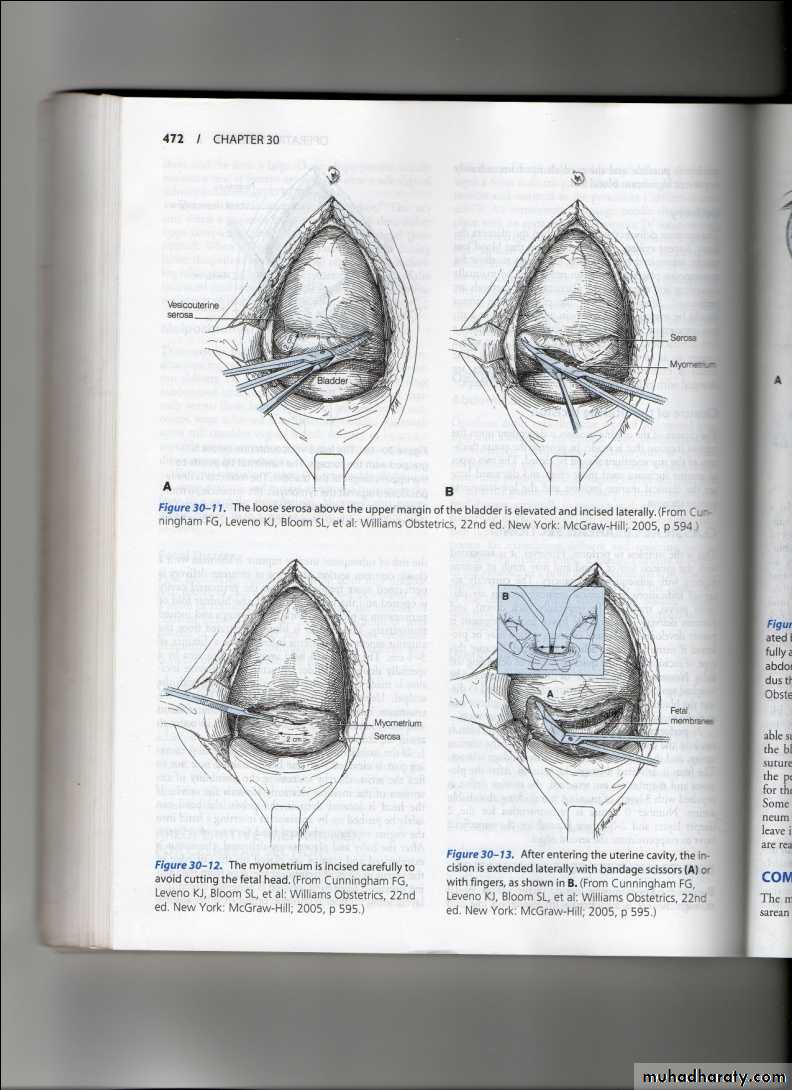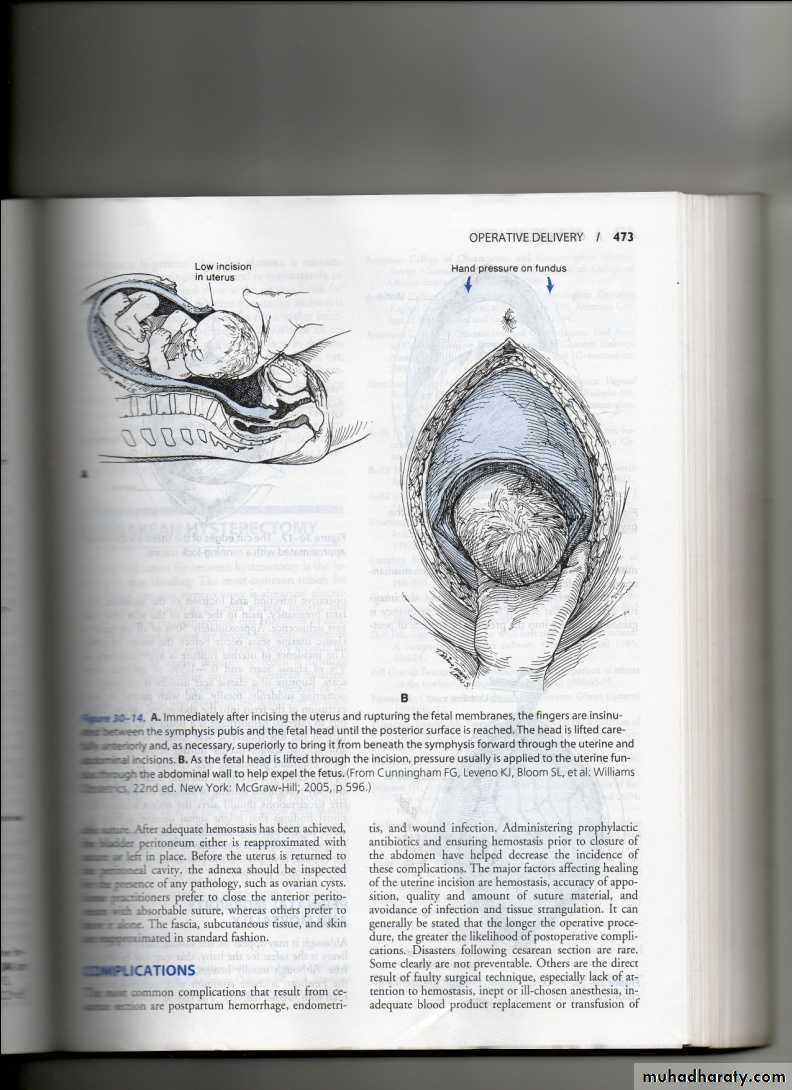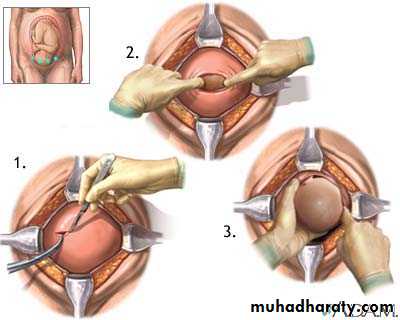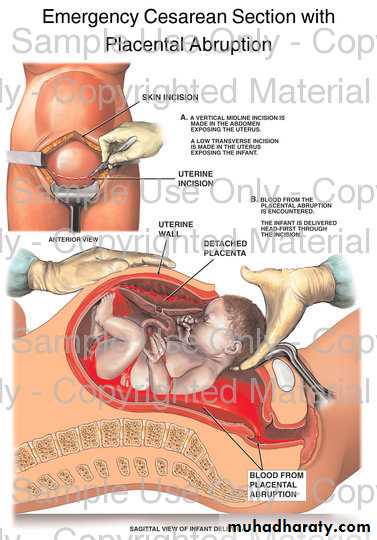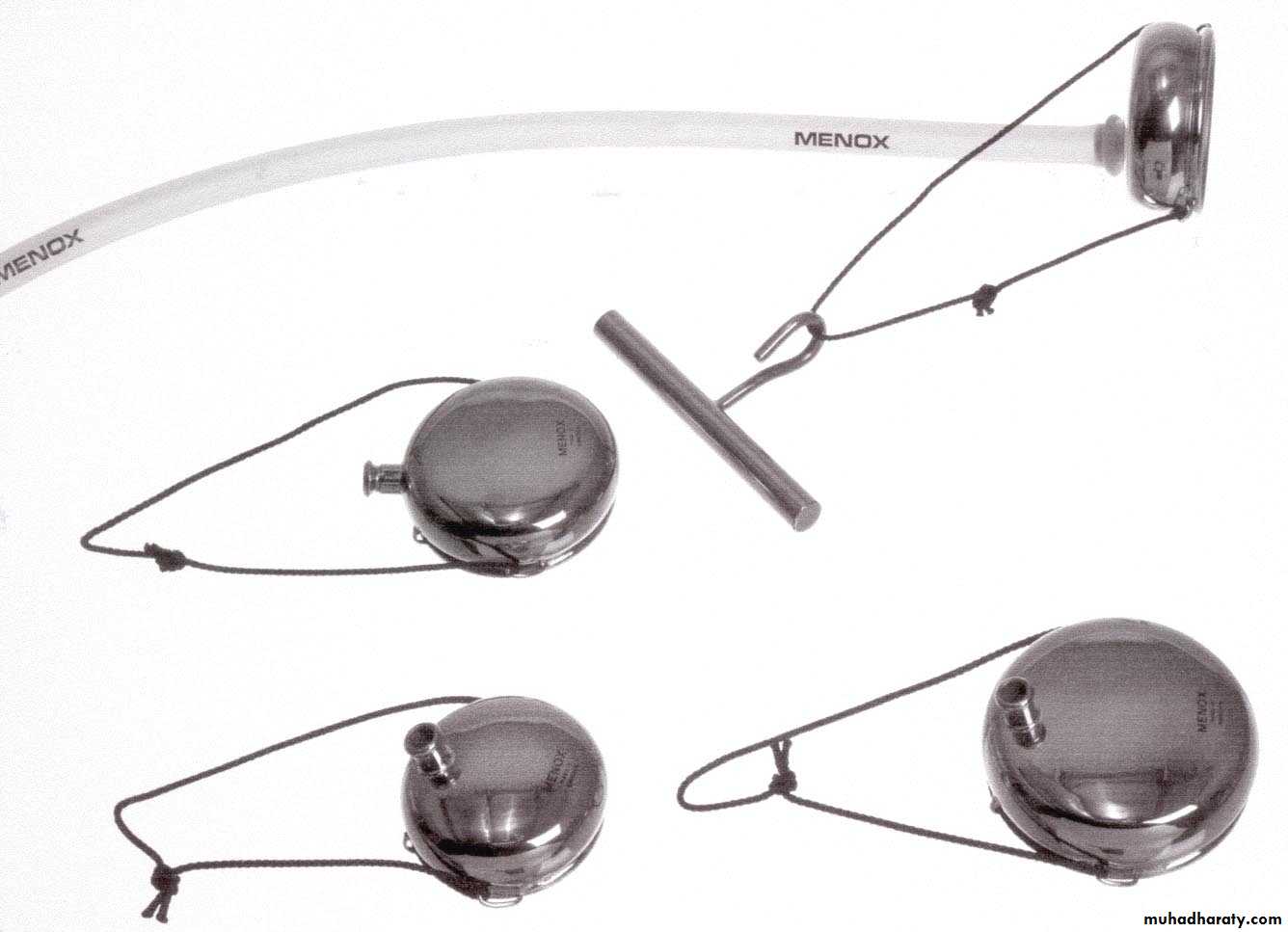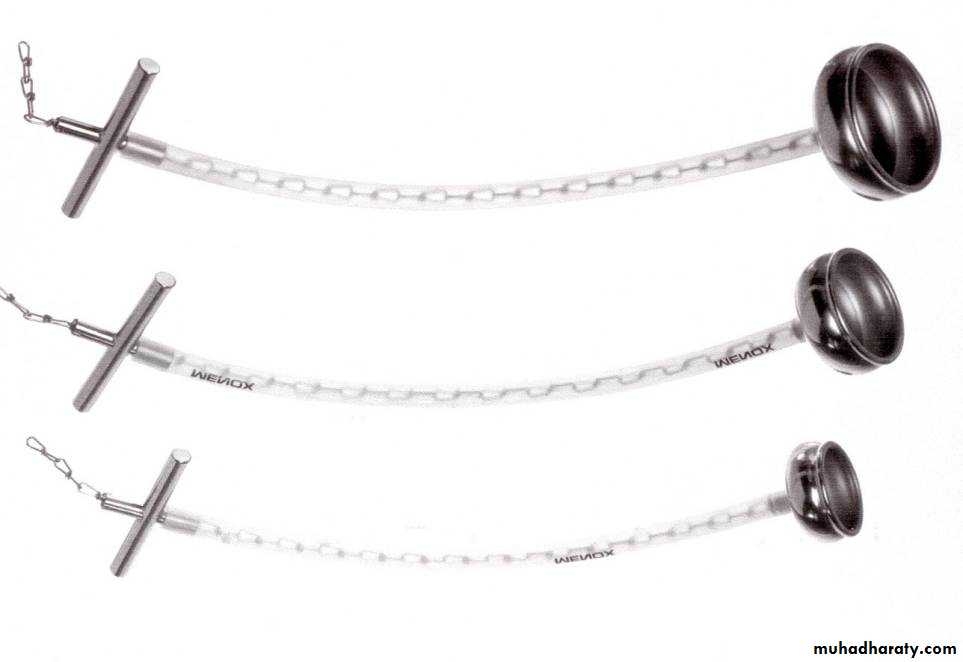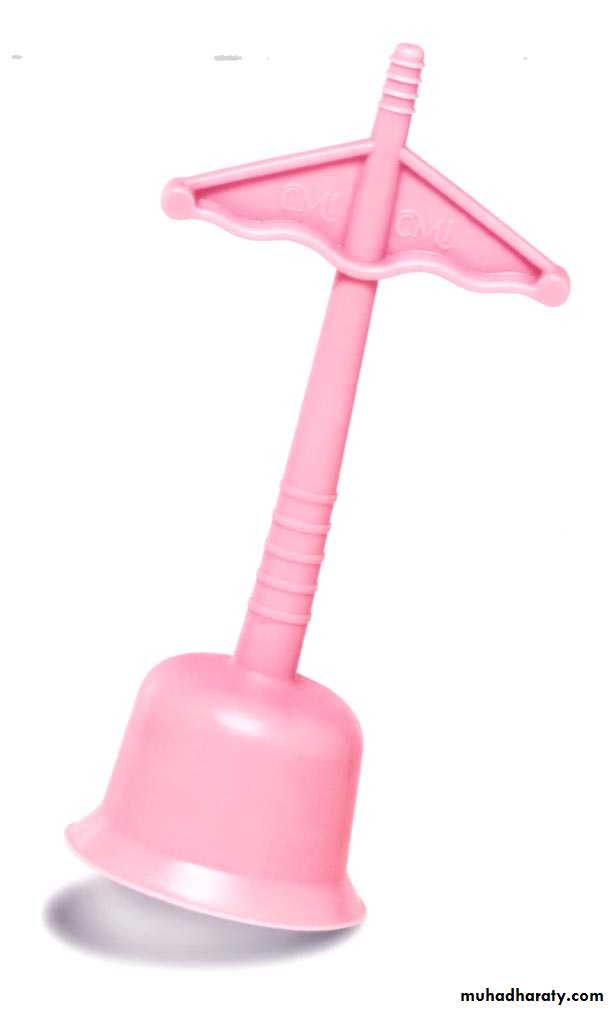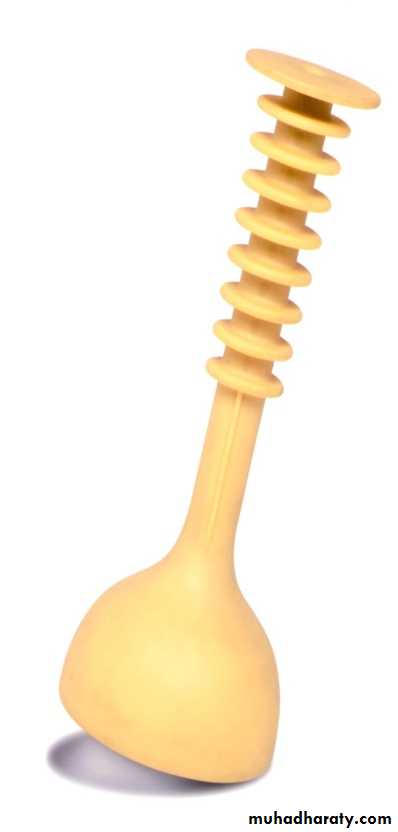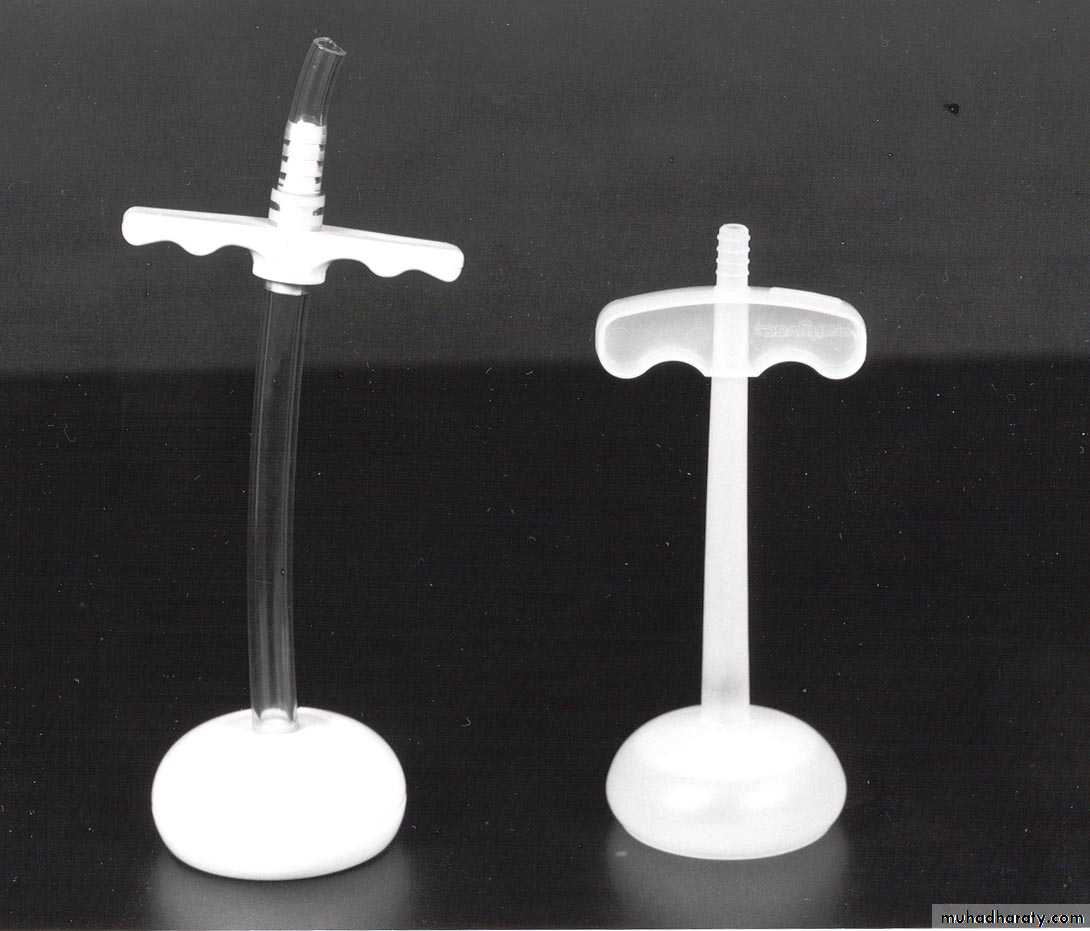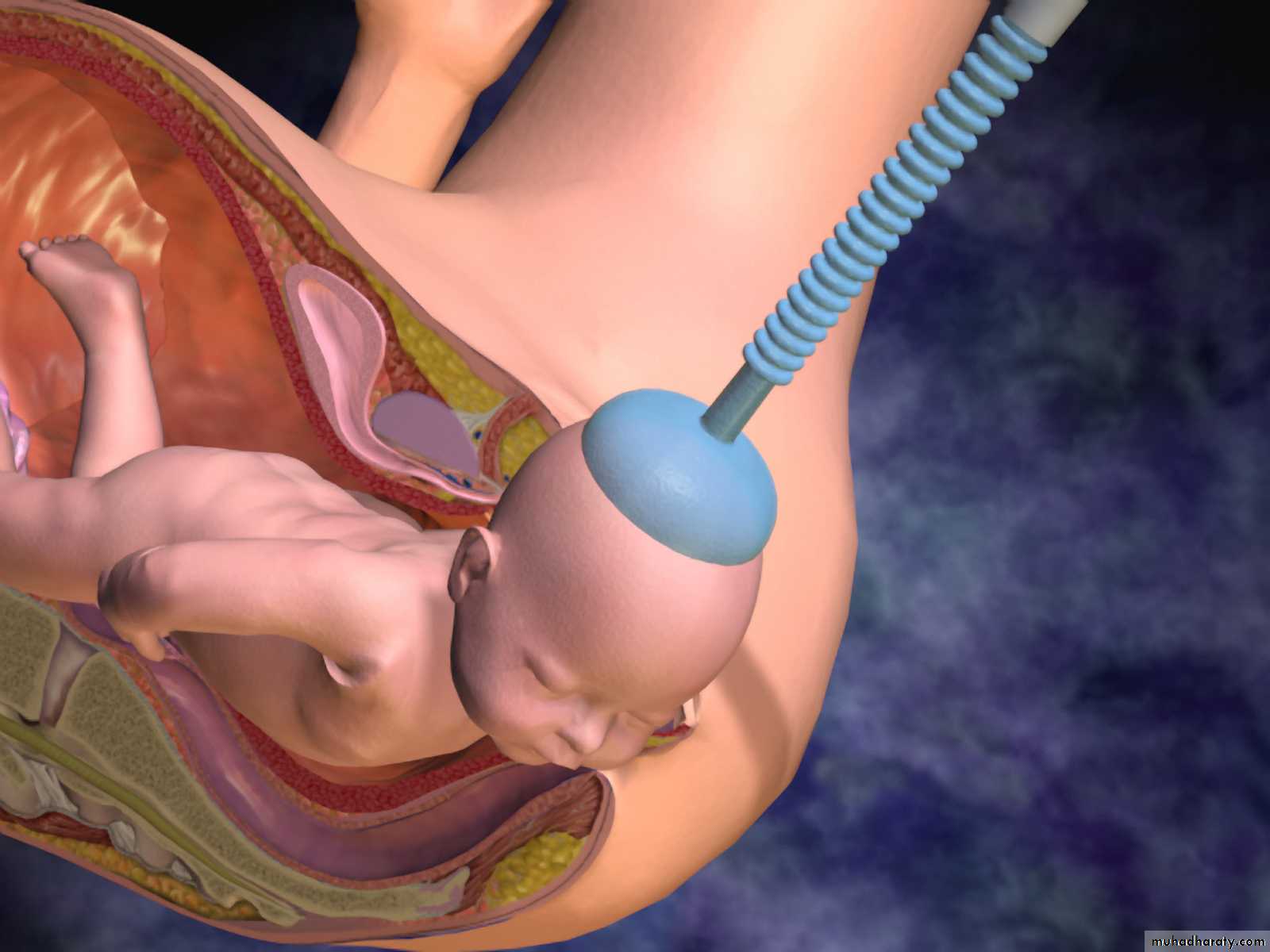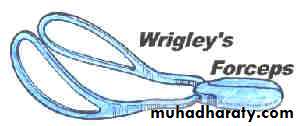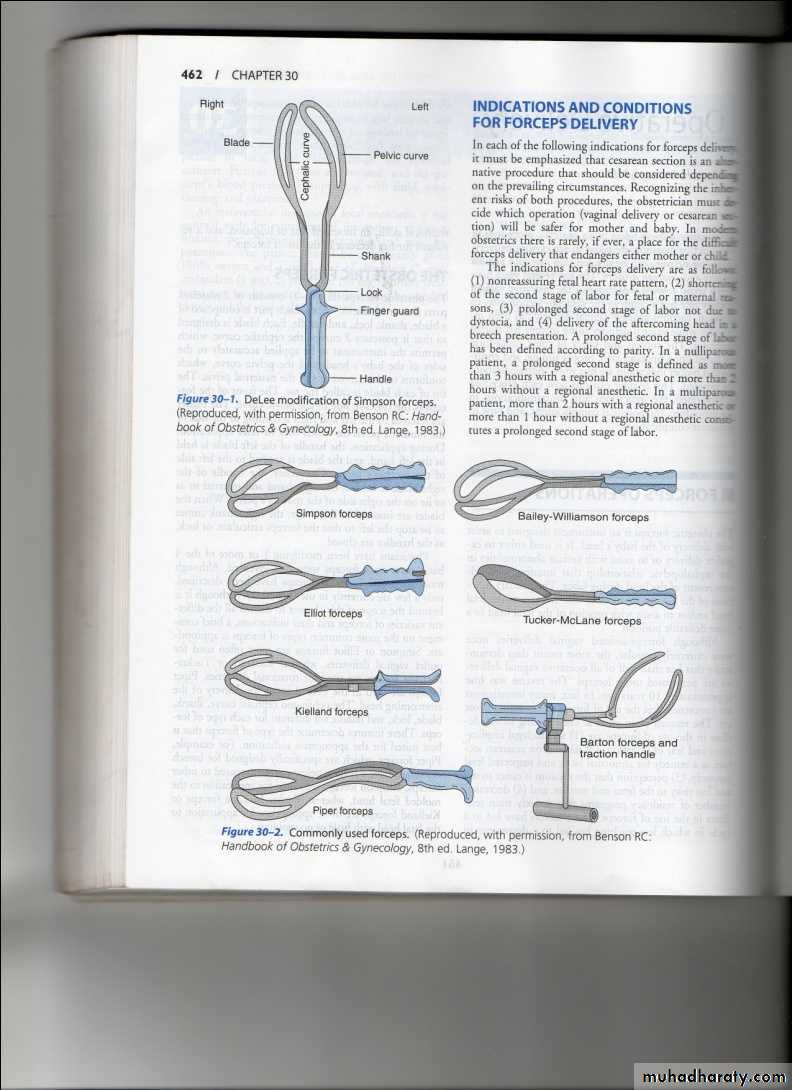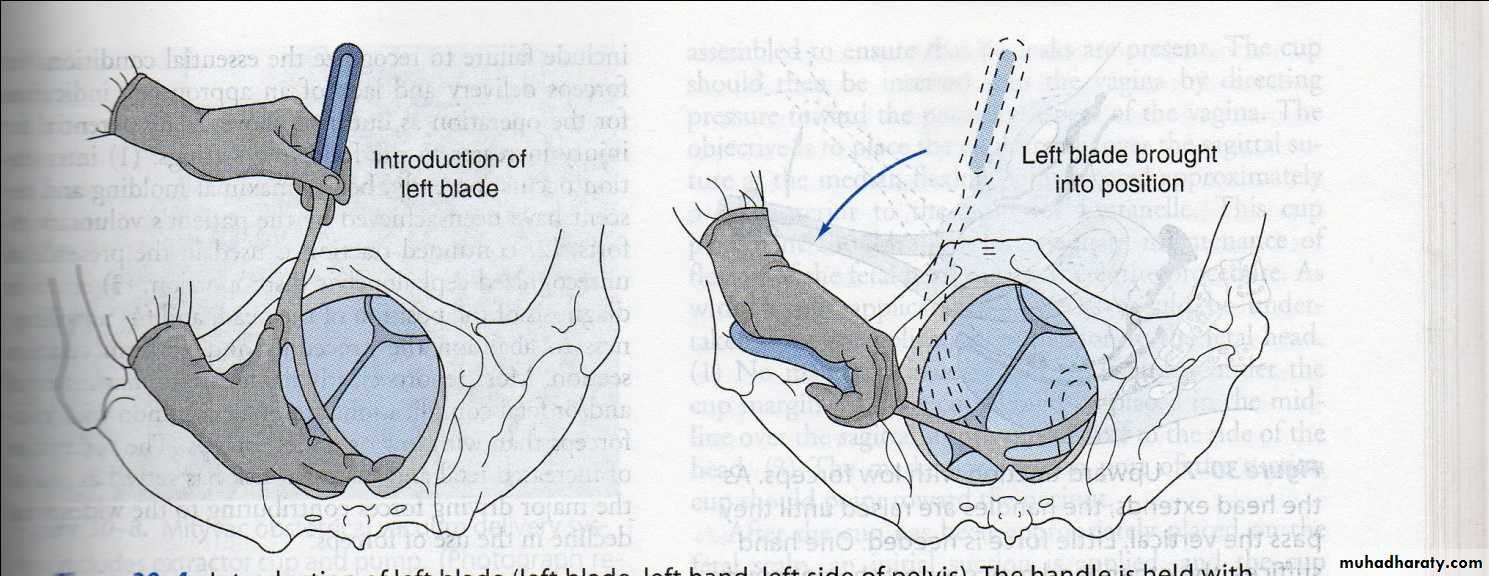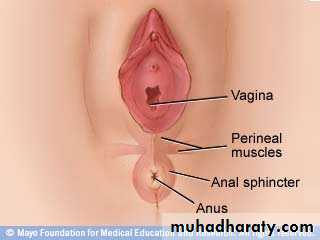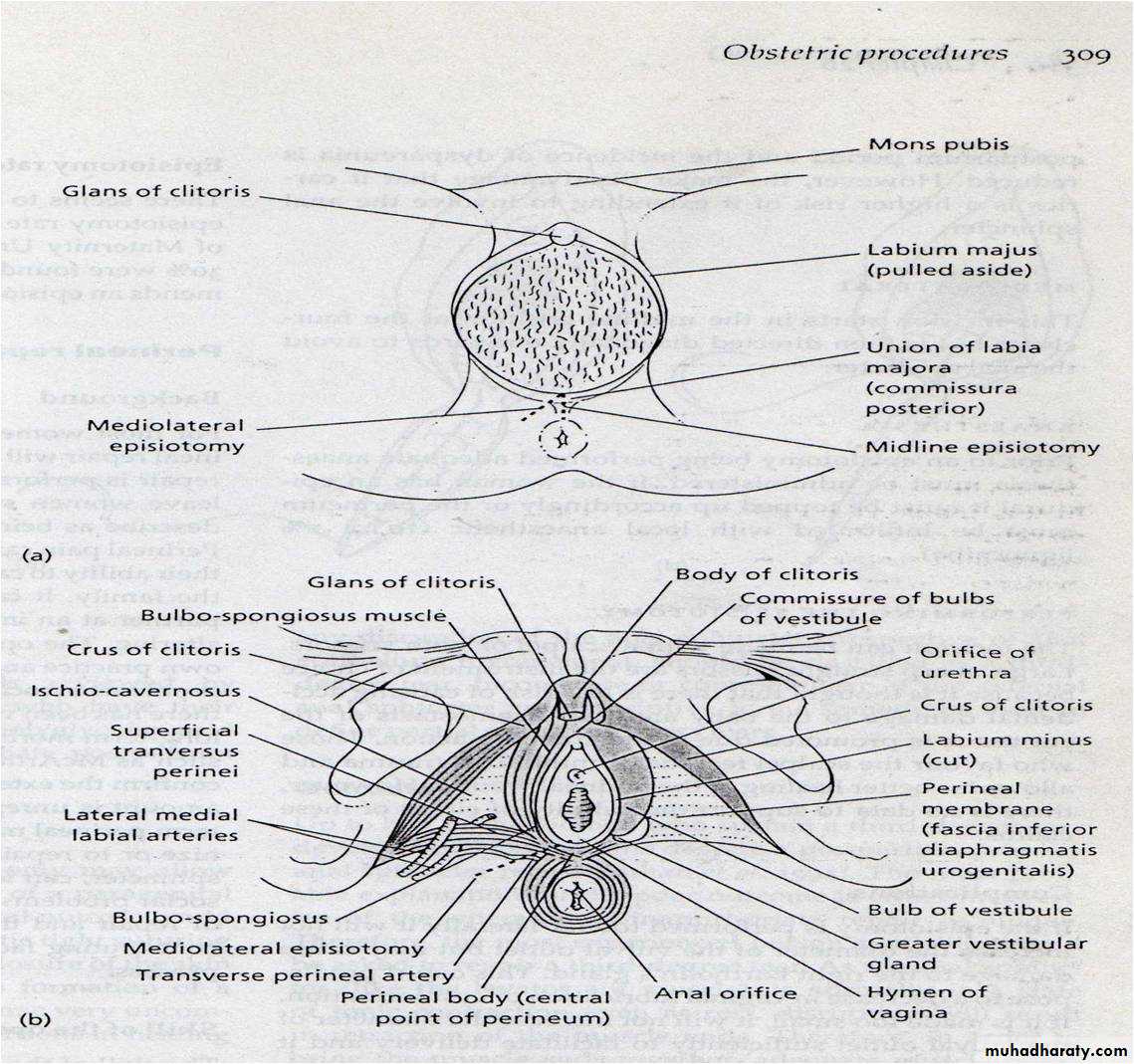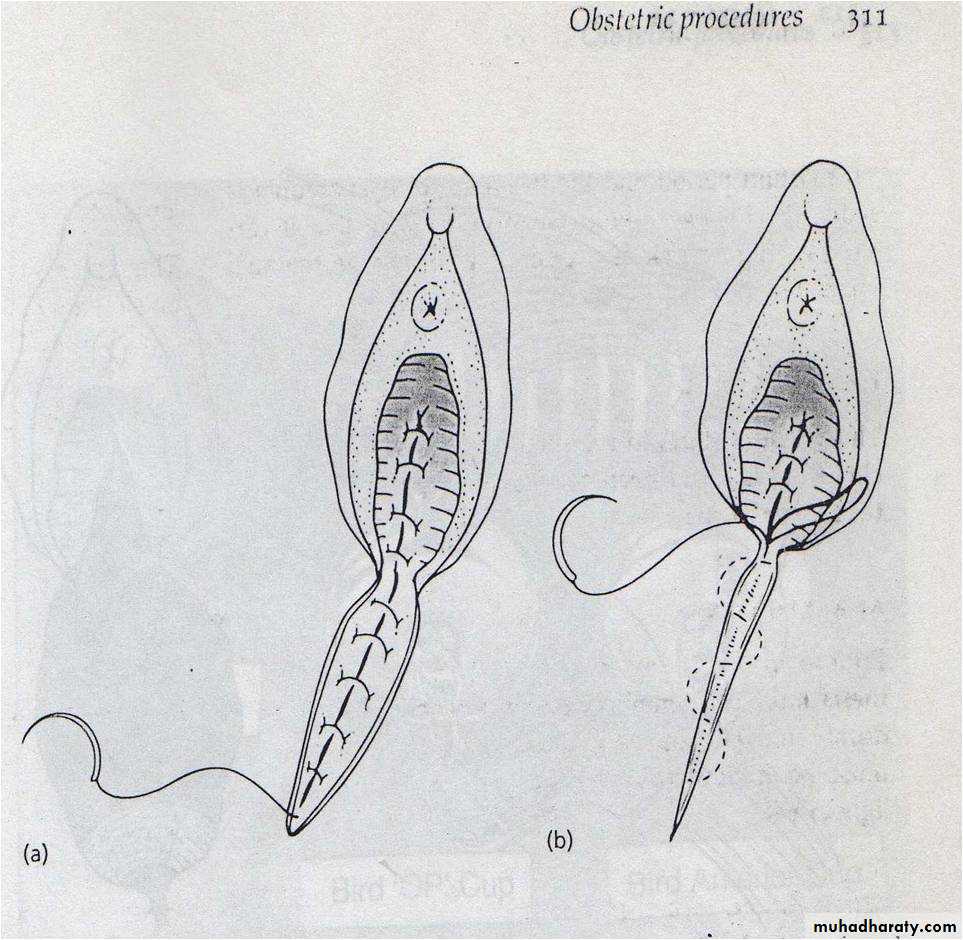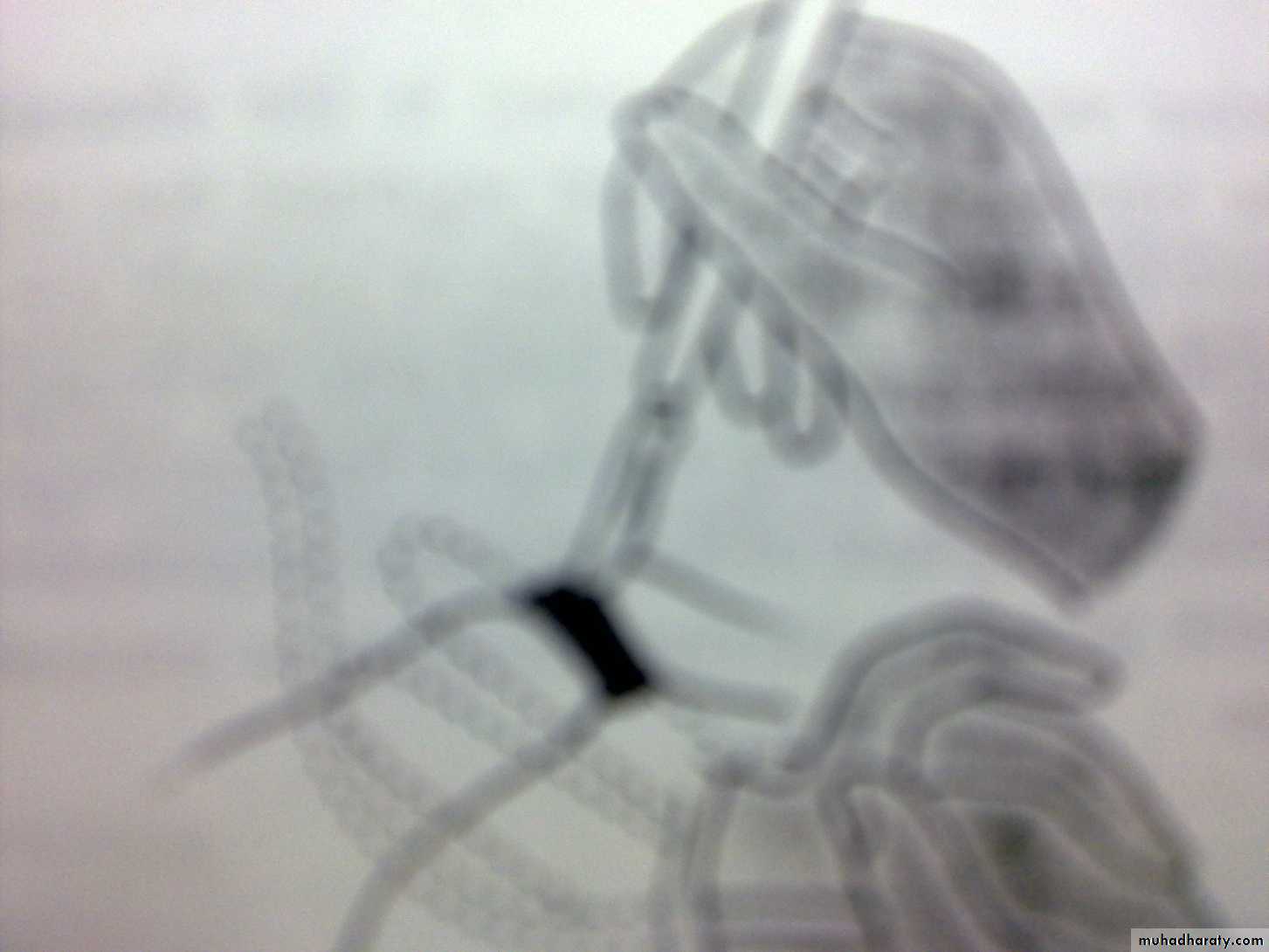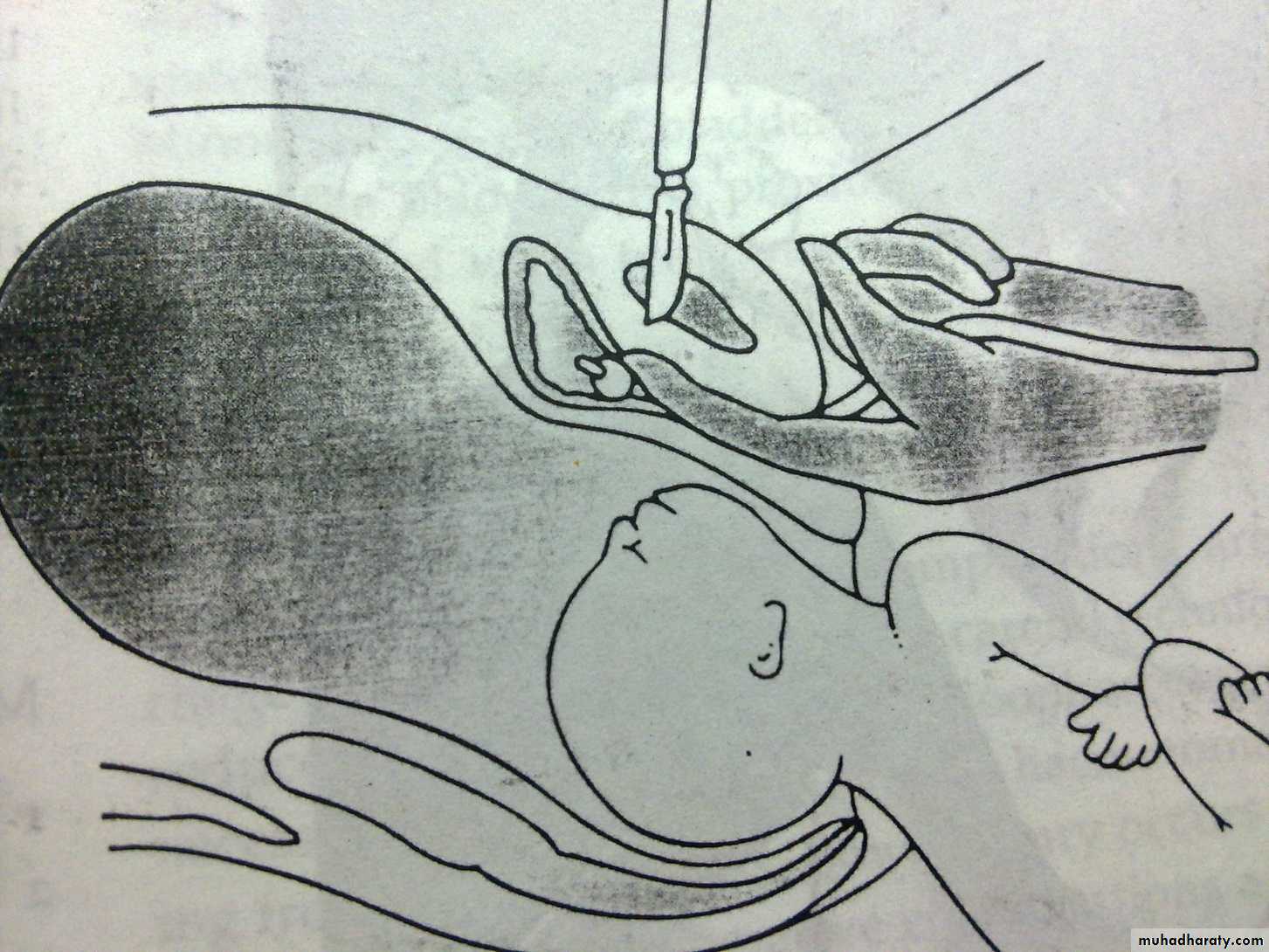Obstetric procedures
aCaesarean section
Is the operation that is performed to deliver a baby via the trans abdominal routeOr refers to the delivery of a fetus,placenta & membrane through an abdominal & uterine incision.
History
First cesarean carried on a live woman in 16th century to a Swiss farmer in early 20th classical operation become wide spread
In 1920 lower segment operation performed
Types of C.S.
Classified according to the site of uterine incisions:Lower segment C.S.
Transverse incision in the lower uterine segment .
Advantage : reduced chance of rupture .
reduced risk of bleeding ,peritonitis ,
paralytic ileus and bowel adhesion.
.
Upper segment (Classical C.S) :
Vertical incision in the upper uterine segment .This incision may be made in the lower segment (low vertical incision) but It’ll invariably extend into the upper segment .
Indications
• Obstructed labour, malpresentation, malposition, multiple gestation• Foetal distress/ prolapsed cord
• Maternal medical conditions
• Obstetric complications
5.Previous uterine surgery : Classical C.S. /Previous 2 C.S./ Previous myomectomy (Full thickness ) .
Indications of Classical c\s
• Preterm labour• Placenta previa- abruptio
• PROM, poor lower segment& transvers lie
• Transvers lie with back inferior
• Large cervical fibroid
• Sever adhesion in lower segment
• Post mortem cs
Cesarean hysterectomy
Incidence 0.01-0.05 percentIndication
• Hemorrhage
• Relative risk;
• Cesarean delivery, previous cs ,placenta previa, placenta accreta& uterine atony
INDICATIONS FOR CS :- Based on the timing of CS at the time of decision making are grouped in 4Categories
Category 1 or emergency CS – There is an immediate
threat to the mother or the fetus. Ideally the CS
should be done within the next 30 min. Some examples
are; abruption, cord prolapse, scar rupture, scalp
blood pH < 7.20 and prolonged FHR deceleration < 80
beats/min.
Category 2or urgent CS – There is maternal or fetal
compromise but was not immediately life threatening.
Here the delivery should be completed within 60-70min
Category 3 or scheduled CS – The mother needed early delivery but there was no maternal or fetal compromise, when continuation of pregnancy is likely to affect the mother or fetus in hours or days to come.
It may be a case of failure to progress where the CS is planned within 1-2 hour
or preterm IUGR with absent end diastolic flow but a normal CTG
or a case with pre-eclampsia where the liver or renal function tests are gradually deteriorating where the CS is planned for within hours to days. The timing of the CS should be before further deterioration occurs.
Category 4 or elective CS – The delivery is timed to suit the mother and staff. but there is no urgency e.g. placenta praevia with no active bleeding;
malpresentations, (e.g. brow, breech); history of previous hysterotomy or vertical incision CS; past history of repair of vesico-vaginal or recto-vaginal fistulae or stress incontinence; HIVinfection.
Elective cs is done around 39w as the incidence of tachypnoea of newborn is much less after this gestation.
However, the medical or obstetric condition determines the gestation at which the elective CS is planned
Technique of C.S. now favors :
Prophylactic antibiotics .
Cohen’s incision .
Delivery of the placenta by controlled cord traction .
Leaving the uterus in during repair .
Not reperitonealizing .
Preparation for C.S. :
Left lat. Position .Empty the stomach and antacid .
Thrombo prophylaxis .
Prophylactic antibiotics .
Catheterization .
Skin preparation : shaving .
iodine , chrorhexidine .
Skin incision :
Low transverse suprapubic incision .(more cosmotic , less dehiscence and hernia ).Cohen’s incision : less post operative febrile morbidity , shorter operative time .
Midline or paramedian incision better exposure .
The skin wound is about 15 cm in length ,excise
the scar of previous C.S. operation .
Uterine incision :
Low transverse LSCS : less dissection of the bladder ,blood loss is less ,lower incidence of uterine rupture .Low vertical incision .
Classical or upper segment incision .
Risk of C. S. :Maternal risk
Mortality after C.S. is 5-10X after normal vaginal delivery .Risk is more after emergency than elective C.S..
Immediate complications :
• Anasthesia , aspiation (Mendelson’s syndrome)
• Haemorrhage (blood transfusion and shock)
• Injury to adjacent organs .
• Infection .
• Post operative ileus .
• Pulmonary embolism .
• Remote : Rupture in pregnancy &labour , Placenta previa,
• Intestinal obstruction and hernia, Risk of repeated C.S.
Perinatal morbidity &mortality
Cs is safer to baby ?• Risk of anasthesia .
• Respiratory problems (transient tachypnea)
• Intracranial haemorrhage (difficult delivery)
• Prematurity ( inaccurate date ).
• Fetal laceration is reported at rate 0.2-0.4%
Operative vaginal delivery or Assisted Vaginal Delivery:
Instrumental vaginal delivery
Vaccum (ventose) & Forceps
assisted vaginal delivery :- delivery of a baby vaginally using an instrument for assistanc when spontaneous vaginal delivery does not occur within a reasonable time.
Incidence:-6 -12% depends on institution & the population
Indication for assisted delivery:
Maternal Indication :1. Maternal distress during 2nd stage .
2. Prolonged 2nd stage .
3. Cardiopulmonary or vascular disease to
reduce the stress of the 2nd stage of labour .
4. Vaginal birth after previous lower segment
C.S. to reduce the stress on the scar .
5. Significant vaginal bleeding .
Fetal Indications :
• 1. Malposition of the fetal head (OP, OT)• 2. Fetal distress ( bradycardia or deceleration )
• and cord prolapse .
• 3. Preterm baby (1500 – 2500 Kg )
• 4. Vaginal delivery of breech : forceps for after coming head to avoid traction on the trunk and the cervical spine and produce controlled flexion of the head .
Ventouse delivery
The vacuum extractor works by allowing the external traction force applied to fetal scalp to be transmitted to the head. The metal cups have a central traction chain and a separate vacuum pipe .it is anterior cups(4, 5, 6cm) or posterior cups.
The silicone-rubber cup the soft cups are smoothly applied to the contour of the head and do not develop a ‘chignon’
Types of vacuum: 1.Rigid vaccum: O’neil Bird Malmstrom
2.Soft vacuum: Funnel cause less fetal injury ,higher failure rate .mushroom Ring
Indications and contraindications for delivery with the ventouse
IndicationsDelay in the second stage
Fetal distress in the second stage
Maternal conditions requiring a short second stage
Contraindications
Face presentation
Gestation less than 34 weeks
Marked active bleeding from a fetal blood sampling site
Prerequisites for delivery with the ventouse
Dilatation of the cervix and full engagement of the headCo-operation of the patient
Good contractions should be present
Basic rules
The delivery should be completed within 15 minutes of application
The head,not just the scalp , should descend with each pull.
The cup should be reapplied no more than twice.
If failure with the correctly placed ventouse occurs despite good traction, the forceps should not be tried as well
Forceps delivery
Types of obstetric forcepsShort curved forceps
Used for Outlet forceps
operation or for delivery
of the head during C.S. ,
it has short shank (2.5 cm),light in weight.
Long curved forceps
Used for delivery of the head from the midcavity,long shank(6.5 cm),heavy weight .
.
Kielland’s forceps
-It has a sliding lock allows Sliding of one blade on the other so it allows accurate placement at any position or station of the head.
-the pelvic curve is initially backward then
sweeps forward but never reach the plane of the shank and handle make a safe rotation in labour.
Classification of forceps application
1.outlet forceps:- when the scalp is visible ,fetal skull reached the pelvic floor2.low forceps:-when leading point of fetal skull is at +2 station or more but not reached pelvic floor
3.mid forceps:- fetal skull above +2
Before application of forceps :
1. Engaged head .2. Position and attitude of the head .
3. Clinically adequate pelvis (mid ,outlet )
4. Empty bladder .
5. Ruptured membrane .
6. Cervix is fully dilated .
7. Appropriate anaesthesia (vacuum without )
8. Experience of the doctor .
9. Well informed patient .
10. working equipment .
Complication of assisted delivery :
Maternal complication : is more common with forceps than vacuum .Soft tissue injuries includes :
Genital : uterine ,cervical ,vaginal ,perineal
lacerations .
Entrapment of the cervix is specific to the vacuum
Bladder and urethral injury : retention ,fistula .
Rectal injuries : laceration ,fistula ,defecation
problems .
Fetal complication :
With forceps : 1. Transient facial marks.
2. Facial palsy .
3. Fracture of skull or facial bones .
4. Sever cervical cord damage .
With vacuum :
• 1. Scalp injury . 6. Fracture of skull .• 2. Cephalhaematoma . 7. Neonatal jaundice
3. Subgleal haematoma . 8. Retinal haemorrhage
4. Intracranial haemorrhage .. 9. Brachial plexus injury .
5. Tentorial tears . 10. cerebral palsy .
EPISIOTOMY
Episiotomy is an intentional surgical incision of the perineum after informed consent with the aim of increasing the soft tissue outlet dimensions to help with childbirth.Episiotomy is advocated when
anterior tears with bleeding or multiple perineal tears appear.fetal distress it is carried out to expedite delivery.
It facilitates instrumental vaginal deliveries
If the delivery process is delayed and it is thought to be due to rigid perineum.
. Whenever there are vaginal manipulations needed such as in some assisted breech deliveries
and in cases of shoulder dystocia an episiotomy may be useful.
Those women who had a previous pelvic floor or perineal surgery may also benefit by an episiotomy.
Types of episiotomy:
Midline episiotomy :vertical incision towards the anus , less blood loss ,easier repair ,quicker healing , less pain in the postpartum period ,less dysparunia.-risk of extension to the anus.
Medio lateral episiotomy : start at midline then
laterally to avoid the anal sphinctor .
Lateral episiotomy .
Complication:1.Difficult repair.2.heavy bleeding.3.extention to the anus.4.infection.5.pain and dyspareunia.6.weak point in the perinium-tear.7.Dryness from injury to bartholine gland.
After care:1.analgesia,oral or suppositories.2.prophylactic antibiotics.3.washing with water and soap.4.hot sitz bath.
Symphysiotomy
Considered in cases of cephalo-pelvic disproportion with vertex presentation & living fetusIndicated for traped aftercoming head& shoulder dystortia
Destructive operations
Required when the fetus is dead where vaginal delivery is is either the only occur or the mother wish to deliver
1-crniotomy
2-perforation of after-coming head
3-decapitation


